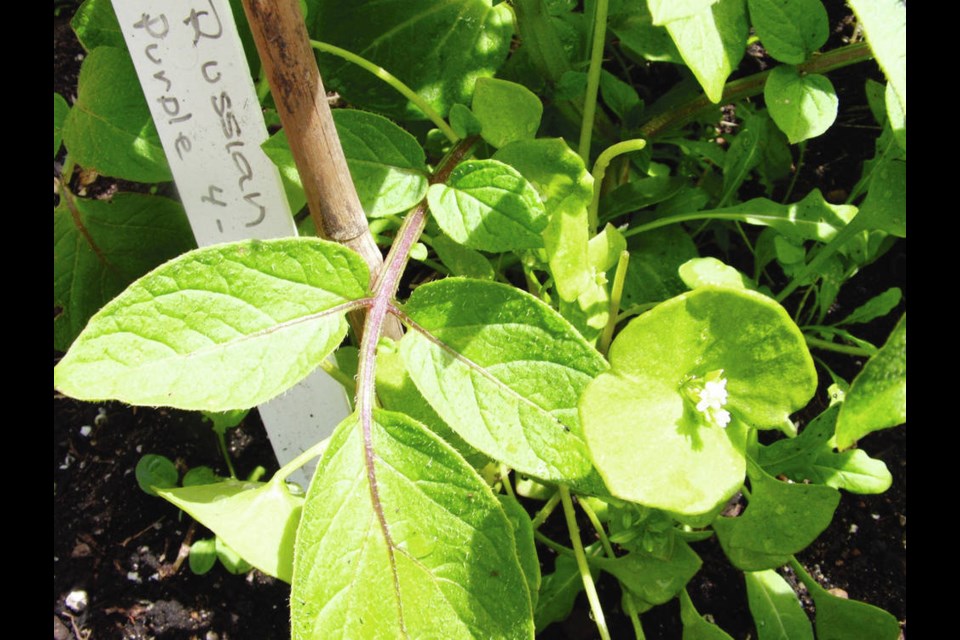At this time in the gardening season, when most plants are up and growing, it can be useful to look around and think about what you’d like more of in the garden, whether it’s time to remove awkward or over-demanding plants, and what plants you want to encourage in their self-sowing habit.
In a little bed beside the garden shed I noticed, tucked under a tall, graceful Himalayan honeysuckle (Leycesteria formosa), a dense little clump of finely segmented, grey-green leaves dotted in slender flower buds and open lilac pink blooms with dark centres.
The little plant is Oxalis adenophylla, a little known and seldom grown flower bulb. In the earlier days of the garden there used to be more of the plants and now, this one has somehow materialized, perhaps from a stray seed, in a relatively new plot.
Also called Pink Buttercups, this little oxalis grows from tubers that are available at some garden centres in the fall. I’ll be looking for them. I’d like more of these charming plants to locate here and there through the garden.
They’ll be back. This spring I’ve been more grateful than ever for treasured flowers and edible greens that I need not plant. They continue their presence in the garden by faithfully shedding seeds.
I haven’t planted parsley for years, yet there is always a plentiful supply of this full-flavoured green in the garden. Letting plants around the edges of the garden flower serves another important purpose. Parsley flowers, like other umbel-shaped bloom clusters, attract and nourish the beneficial insects that help to control pests. Cilantro and dill are more examples of tasty greens that, allowed to flower, enhance a garden’s health.
Since early spring I’ve been feasting on the juicy leaves of miner’s lettuce, the soft, tender rosettes of corn salad, and nutritious chickweed The first two self-sow around plot edges and in corners reserved for them. Chickweed pops up here and there and in moist, plump soil, produces fat clusters of munchable leaves.
With warm weather comes golden purslane’s fleshy, succulent leaf rosettes, lightly lemon-flavoured and nutrient-dense.
Self-sowing flowers that I appreciate most and encourage to spread into far corners and unused areas of the garden include the indestructible rose campion (Lychnis coronaria), a perennial whose 45 to 60 cm flower stems arise from basal rosettes of woolly, silver-grey, evergreen leaves. I’ve let them estabish on a dry slope down to the boulevard. The deer have never touched them.
Most rose campion plants seen in gardens have bright magenta flowers. Mine are white, or pink-blushed white — descendents from the original seeds I planted, of Lychnis occulata, sometimes sold as “Angel’s Blush.”
Foxgloves, money plant (Lunaria annua), big peony-flowered poppies, calendula and borage are more flowers I encourage in the garden. A park-like clearing behind the garden shed is where I’ve had some success growing Lunaria, poppies, and foxgloves.
What’s not to like about tasty, nutritious edibles and handsome flowers that grow themselves?
Loopy tip. A gardener in Victoria has passed along an idea for re-using parts of disposable masks. S.F. pulls off the ear loops and uses them as “excellent plant ties. They are durable and stretchy, and you can tie multiple pieces together to make a longer tie if needed.”
Stifled strawberries. Marie has written about finding what she perceived to be a good deal on strawberry plants at a nursery set up at a local “big box” store. She was drawn to the attractive packaging and modest price for 10 plants, “though the bag they were in was rather small.”
Inside the bag were dry lumps of soil and nests of brown straw. The next day, a few pale green leaves appeared amid the mass of dried matter. Marie was left disappointed, and disillusioned.
It is both interesting and useful to explore all sorts of different plant outlets. You never know where you might find something unusual and alluring for the garden. But for standard items like vegetables and flower transplants, perennials, herbs and most food plants, I prefer shopping at locally owned and operated nurseries and garden centres, and choosing from among potted plants that can be easily assessed. I watch for young, fresh-looking, compact plants in good health.
Cane fruits and strawberries are commonly sold packaged. Those packages should have open tops that show green growth.



